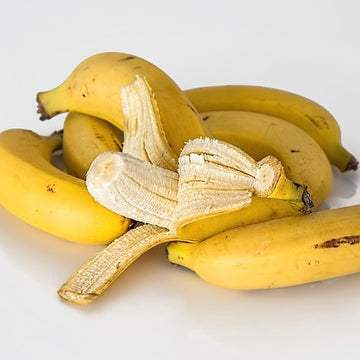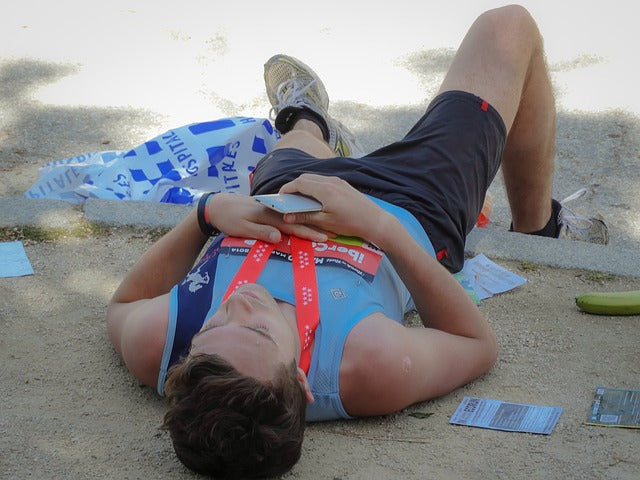
- How your body uses potassium to regulate blood pressure, nerve functioning and other important processes.
- Why endurance athletes should care about potassium.
- How to identify and manage a potassium deficiency
- How YOU can incorporate this knowledge into your daily nutrition.
How does the body use potassium?
Potassium is the primary electrolyte located inside the body's cells (intracellular) and stored in muscle fibers along with glycogen. Like all electrolytes in our #30SaltyDays series, potassium has a variety of roles in the body: Blood pressure: For the past 20 years, scientists have found that people with high blood pressure who don’t want to lower their salt intake can simply consume more potassium-containing foods (such as bananas, potatoes or berries). Why? Because the balance of the two minerals is what matters. In fact, Dutch researchers determined that a low potassium intake has the same impact on your blood pressure as high sodium consumption. Additionally, a 1997 study by the National Heart, Lung and Blood Institute found that volunteers who consumed 4,700 mg of potassium per day through a well-balanced diet that included lots of fruits and vegetables reduced their blood pressure in just two weeks. This study ultimately became the foundation for today’s DASH diet. Muscle contraction: As we discussed in last week’s blog post, sodium and potassium ions operate through what’s called the “sodium-potassium pump.” Potassium passes through cell walls much more easily than sodium and naturally builds up inside cells. Sodium, on the other hand, is primarily stored outside the cell wall in the extracellular fluid (plasma). Recall from your undergrad biology class that nerves relay information through electric signals. Thus, the different concentrations of sodium and potassium inside and outside of the cells build up slight electric charges, which help your nerves send information and manage muscle contractions. This is one reason low electrolytes are sometimes thought to cause muscle cramps. Fluid/nutrient regulation: This same sodium-potassium pump also contributes to fluid regulation. In nature, things naturally move from an area of high concentration to low concentration, and the imbalance of sodium and potassium causes these two ions to move in and out of cells, based on water content. As potassium ions transverse the cell walls, sugars, waste products, and nutrients pass with them, meaning potassium is also essential for transporting energy throughout the body. Enzyme production: Potassium is also necessary for certain enzyme production, including adenosine triphosphate (or ATP, the prime source of energy for cells) and pyruvate kinase, an important enzyme involved in carbohydrate metabolism.
Should endurance athletes care about potassium?
Absolutely! It is nearly impossible to find a local race without trays of oranges and bananas. In addition to being great sources of simple sugars, these fruits are full of potassium. Some exercise physiologists theorize that the sodium-potassium pump may contribute to exercise-induced fatigue. Recall from above that the body naturally stores potassium inside cells and sodium outside in the extracellular fluid (plasma). However, studies of marathon runners (1970, Journal of Applied Physiology) have found that long exercise results in greater amounts of potassium outside the cells, which can contribute to cramping, bloating and general fatigue. The balance of sodium and potassium usually returns to normal about an hour after exercise in healthy adults. For the technically-minded reader, here is a more in-depth explanation, via “Salt Science,” a helpful guide on our website regarding electrolyte supplementation: The electrochemical gradient of potassium between intracellular and extracellular space is essential for nerve function; in particular, potassium is needed to repolarize the cell membrane to a resting state after an action potential has passed. This means that the presence of potassium is critical to “reset” the nerve for the next activity. Decreased potassium levels in the extracellular space will cause hyperpolarization of the resting membrane potential. As a result, a greater than normal stimulus is required for depolarization of the membrane in order to initiate an action potential. Simply, this means that lack of potassium will slow down or halt nerve and muscle action.

What is potassium deficiency?
Potassium deficiency symptoms include nausea, slow reflexes, vomiting, muscle weakness, muscle spasms, cramping, and rapid heart rate. Note that, similar to sodium intake, high blood pressure patients have to pay extra close attention to potassium. According to a University of Connecticut USATF advisory, potassium levels lost in sweat can be a concern for people in general and especially for people taking diuretics for high blood pressure. Diuretics cause excessive excretion of potassium, and running could result in hypokalemia (low potassium). Also, plain water intake or hyper-hydration will exacerbate losses of potassium by sending the excess fluid to the kidneys for excretion at the expense of potassium.








